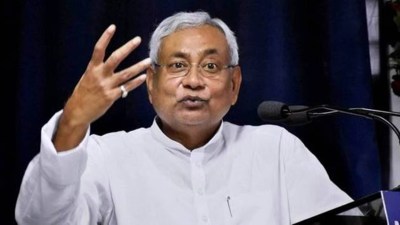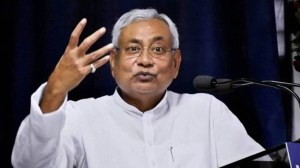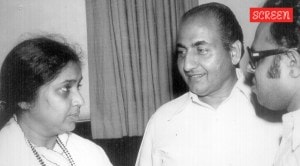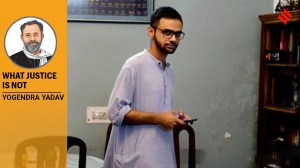Rajouri attack: Shop owner who took on militants used rifle after 24 years
In the absence of a licence and with little chance of it ever being used, the rifle, says Bal Krishan, was little more than a “danda” at home – left unused for around 24 years.
 Opened two rounds of fire, militants fled: Bal Krishan.
Opened two rounds of fire, militants fled: Bal Krishan. On the evening of January 1, Bal Krishan, 42, had just returned home from his cloth shop when he heard the gunfire.
“I picked up my rifle and rushed out. I saw two gunmen moving around in the neighbourhood. They were very near my house. I opened two rounds of fire and the militants panicked and fled into the nearby forests,” says Bal Krishan, who owns a cloth shop at the chowk in Dangri, a village near Rajouri town.
 Villagers at the last rites of the six killed since Sunday evening in Dangri village of Rajouri, on Tuesday. (PTI)
Villagers at the last rites of the six killed since Sunday evening in Dangri village of Rajouri, on Tuesday. (PTI)
The militants had been on a killing spree, and had targeted at least four homes, killing four people and injuring six others, before they ran into Bal Krishan, a former Village Defence Committee (VDC) member. If it wasn’t for his quick thinking, say police and Upper Dangri panchayat sarpanch Darshan Sharma, the casualties would have been far worse.
“After Bal Krishan started shooting, the militants fled into the forests. That helped the villagers come out of their homes and attend to the injured,” said Sharma.
This was only the second time Bal Krishan was using his gun — an unlicensed .303 rifle. The first was in 1998-99, at an arms training camp conducted by the Army after he and the other VDC members were given guns by the J&K Police. “We were then given 100 rounds of cartridges each. We used 10 rounds at the Army training camp, after which I was left with 90 bullets,” he said.
In the absence of a licence and with little chance of it ever being used, the rifle, says Bal Krishan, was little more than a “danda” at home – left unused for around 24 years.
 An injured person is taken to a hospital after the explosion in Rajouri’s Upper Dangri village. (PTI/File)
An injured person is taken to a hospital after the explosion in Rajouri’s Upper Dangri village. (PTI/File)
In the mid-1990s, at the height of militancy in J&K, VDCs were set up in 10 districts of Jammu as force multipliers for the region. Amid allegations of highhandedness and misuse of weapons, the VDCs gradually lost their clout as successive governments since 2002, while denying plans to disband VDCs, encouraged members to return their weapons.
In Dangri, too, as peace prevailed, a couple of years ago, the district administration announced that those above 60 would have to return their weapons.
Bal Kishan says that since he was under 60, the police asked him to submit a passport photograph at the Rajouri police station so that he could be issued a licence for his gun,” he says.
 One of the injured being taken to a hospital in Rajouri. (ANI/File)
One of the injured being taken to a hospital in Rajouri. (ANI/File)
While he says that he is yet to get his licence, “nearly 8-9 months ago, the Rajouri police asked me to come to the police station with my weapon. After examining it, the officer returned the gun to me with instructions to keep it clean,” he says, adding that he had then never imagined that it would help him save lives.
Until four years ago, when he opened his cloth shop in the village, Bal Krishan worked as a salesman at a shop in Rajouri town.
“Even during the days of militancy, when I had to travel to Rajouri town, I would keep the gun at home,” says Bal Krishan, who is a father of three.
Dangri village, which has a population of over 7,000, 90 per cent of them Hindus, had never faced a militant attack until now. However, a VDC was set up in 1998-1999, following the 1997 killing of eight people at the nearby Swari village.
Bal Krishan, then a bachelor, says that when he volunteered to be a VDC member, he knew it came with risks and would make him a prime target of militants. “Yet, the urge to do something for my family and other villagers was strong,” he says.
On Monday, as Bal Krishan sat among the mourners at Dangri Chowk, Ravinder Raina, the UT president of the BJP, introduced him to visiting Lieutenant Governor Manoj Sinha and praised his role in taking on the militants. “The tragedy would have been much worse if it wasn’t for Bal Krishan. The militants fled after he opened fire,” said Raina.
On Monday, DGP Dilbag Singh, while talking to media persons, said that the VDCs would be revived in J&K.







